Boeing has reportedly fired the head of its 737 Max program following the Alaska Airlines plane scandal that exposed a litany of safety lapses.
Ed Clark, vice president of the MAX program and general manager of the Renton facility, will leave the company, according to the Seattle Times.
He will be replaced by Katie Ringgold, the current vice president of 737 delivery operations.
It comes after a faulty door plug. caused a panel to detach at 16,000 feet of a Boeing 737 series aircraft in a Alaska Airlines flight on January 5. The aircraft was assembled at the Renton facility.
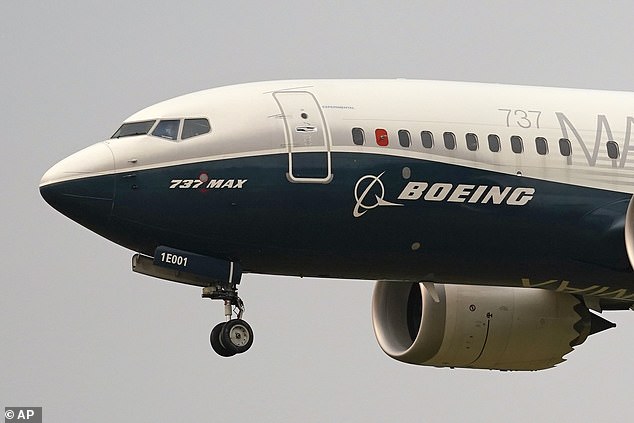
Boeing has reportedly fired the head of its 737 Max program following the Alaska Airlines plane scandal that exposed a litany of safety lapses.
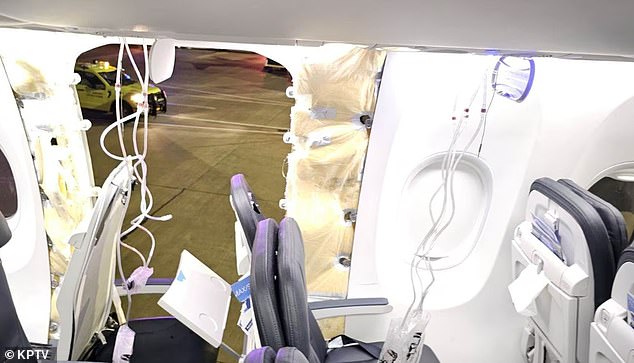

The Boeing 737-9 MAX rolled off the assembly line just two months ago and received its certification in November 2023, according to an FAA record posted online.
Aviation regulators temporarily grounded the Max 9s pending safety checks, but now they are back in the skies.
Boeing’s market capitalization fell from $150 billion on the day of the Alaska Airlines scare to a low of $120 billion on January 16.
Clark’s firing was announced in an email sent by Commercial Airplanes chief Stan Deal to employees Wednesday morning, according to the Times.
Deal said the leadership shake-up is intended to ensure an “increased focus on ensuring that every aircraft we deliver meets or exceeds all quality and safety requirements.”
Panic audio from the Alaska Airlines chaos showed how the pilot radioed for help after the Boeing 737 Max plane’s window burst shortly after takeoff.
Accident investigators are calling it a miracle that everyone on board survived after the “truly terrifying” breakup on the flight from Portland to Ontario International Airport in California.
Toys, phones and clothing were sucked into the night after the outlet door “popped off the plane,” causing instant decompression for 171 passengers aboard Flight 1282.
But the fact that most people were still wearing seat belts just 10 minutes into the flight likely prevented them from following their belongings through the hole, according to the National Transportation Safety Board (NTSB).
“We are very, very fortunate here that this did not end in something more tragic,” NTSB Chairwoman Jennifer Homendy said at a news conference days later.
“There was no one sitting at 26A and 26B, where the door socket is.” ‘That said, I imagine this was a pretty scary event. “We don’t often talk about psychological damage, but I’m sure that happened here.”
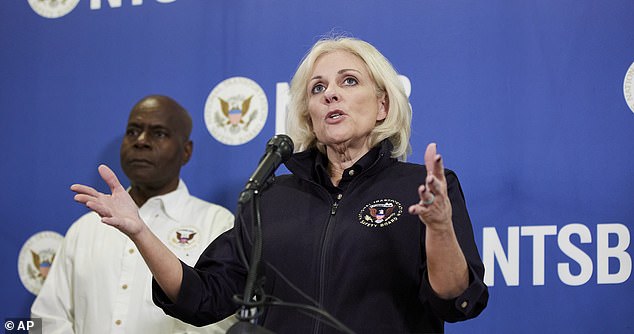

Jennifer Homendy of the National Transportation Safety Board said the explosion at 16,000 feet was an “accident, not an incident.”
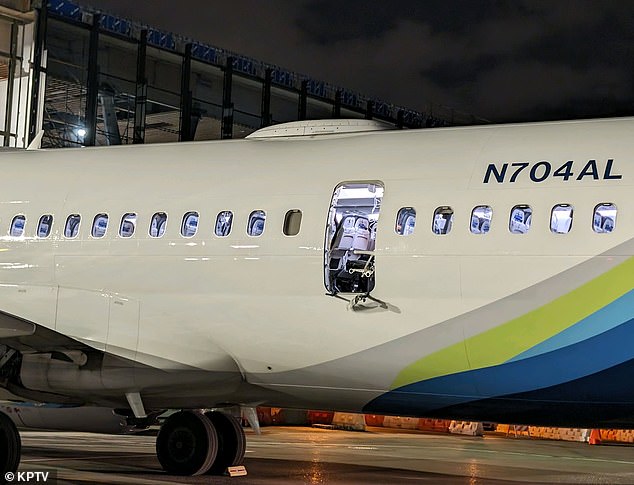

A photo shows the window blown out. It is offered as a door on the plane. Alaska opted not to take this option, although the potential door frame was completely torn off by the fuselage failure.
The headrests of seats 26A and 25A were torn off when gale force winds hit passengers and the seat of 26A was destroyed.
All 144 Boeing Max 9s in service across the United States have been grounded pending emergency inspections by the Federal Aviation Administration (FAA).
Terrifying images showed airmen looking through the gaping hole in the fuselage toward the flickering lights of Portland below in the eerily silent cockpit.
Passengers reported hearing a “really loud bang” before a “deadly” silence fell over the cabin as the plane made its emergency landing back to Portland about 40 minutes later.
A 20-year-old woman named Elizabeth told Oregon Live that it “sounded like your ears were normally popping on a plane, but 10 times louder.” She couldn’t believe it was real.”
“We were all calm,” he said of his traveling companion, “but I felt like I was about to cry, because who knows, these could be my last moments.”
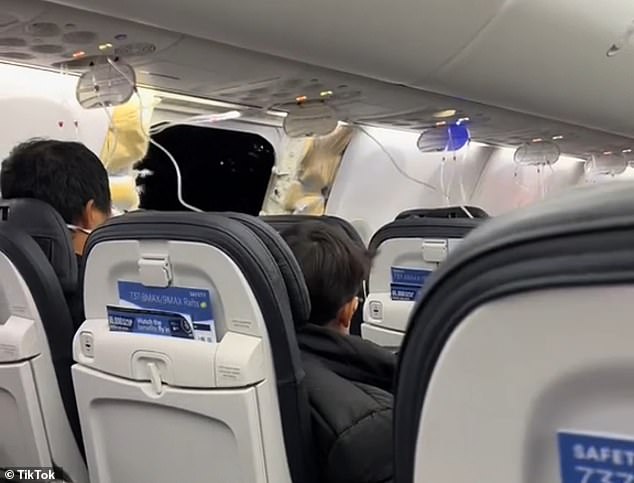

Reports suggest that fortunately 26A, the seat next to what appears to have been a windowed emergency exit, was not occupied.
Another passenger, Kyle Rinker, 29, said the plane became “dead silent.” Nobody made a sound.
The plug door is used as an emergency exit when the plane is configured to carry more passengers, but is sealed and invisible from the inside in the configuration used by Alaska.
Oxygen is needed in emergencies that occur above 12,000 feet to prevent hypoxia (lack of oxygen) that can cause dizziness, unconsciousness and permanent brain damage, and Homendy said the situation would have been even more serious if the plane had further advanced in his flight.
“Think about what happens when you’re on a cruise ship,” he told reporters.
“Everyone is up and walking, people are not wearing seat belts. They go to the bathrooms. The stewards are providing service to the passengers.
“We could have ended up with something much more tragic.”

